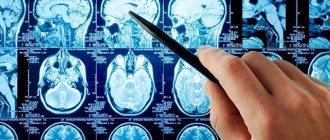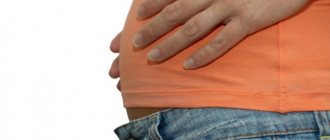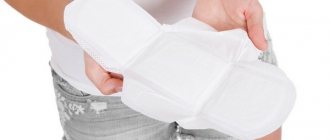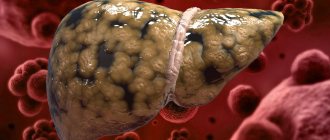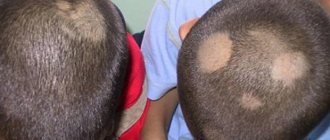Due to an excess of cholesterol in the blood, many people are diagnosed with cerebral atherosclerosis. Often the causes of the disease are unhealthy food and increased stress levels. The first manifestations of the pathology are noise in the head and headache. To lower cholesterol levels, drug therapy and a healthy diet are used. Blocked blood vessels are removed surgically.
What is this disease?
Atherosclerosis of cerebral vessels is a disease that involves significant narrowing of cerebral vessels due to disorders of lipid and protein metabolism. With such disorders, there is an increase in the level of cholesterol, or rather its most atherogenic classes - low and very low density lipoproteins (LDL and VLDL).
Moving through the vessels, they settle on their walls, significantly narrowing the lumen and worsening bleeding. Over time, atherosclerotic cholesterol plaques can break away from the walls and form blood clots, so timely treatment of atherosclerosis is an absolute necessity.
In medicine, it is customary to distinguish three stages of cerebral atherosclerosis:
initial stage
. At this stage, lipid spots and stripes begin to appear on the walls of blood vessels. They do not prevent bleeding at all, since they do not rise above the surface of the vessel walls. Over time, yellow-gray greasy spots and stripes are increasingly prone to merging.- Stage of progression (progressive atherosclerosis). Yellowish raised growths begin to form on fatty spots and stripes, and cholesterol plaques form. They can merge with each other, forming a significant obstruction to bleeding. Over time, the formations can crack and break off; even a small part of the plaque, when it gets into small vessels, of which there are a huge number in the brain, clogs it.
- Stage of atherocalcinosis (obliterating atherosclerosis). Calcium salts are deposited on the cholesterol plaque, as a result of which it becomes very dense and increases in size. Over time, it seriously deforms or completely clogs the vessel.
In medicine, it is also customary to call cerebral atherosclerosis cerebral, that is, a disease related directly to the brain. According to the ICD 10 classification, it is listed under code I67.2 and is defined as a chronic, complex, but still treatable disease.
Surgical treatment of cerebral atherosclerosis
The main goal of the operation is to prevent stroke. This involves removing or reducing the formation of atherosclerotic plaque and widening the arteries, thereby providing greater blood flow to the brain. Surgery is considered in cases where symptoms are refractory
drug relief. For example, indications for surgery are:
- The presence of repeated TIAs or strokes.
- Determination of high degree of stenosis.
- Insufficient blood supply to any part of the brain.
Balloon angioplasty/stenting is a minimally invasive endovascular procedure that compresses plaque and widens the diameter of the artery. Endovascular means that the procedure is performed inside a vessel using a flexible catheter. The catheter is inserted into the femoral artery in the groin under angiographic guidance. The catheter is then advanced through the bloodstream to where the narrowed artery with plaque is located.
The main goal of the procedure is to reduce the stenosis by less than 50%, resulting in a slight increase in the diameter of the vessel to improve blood flow to the brain.
In the right place, a small balloon is slowly inflated, it expands and compresses the pathological formation located on the wall of the artery. The balloon is then deflated and removed. After the balloon is removed, a self-expanding mesh tube called a stent is placed in the area of the plaque. It keeps the artery in a constantly open position. The stent remains in the artery permanently.
Complications after angioplasty may include:
- stroke;
- rupture of the vessel wall with a catheter or balloon;
- vasospasm.
Angioplasty is most often performed for severe arterial stenosis (more than 70%) and recurrent TIA or stroke, which is not corrected by drug treatment. Angioplasty/stenting can successfully reduce stenosis to less than 30% without complications in 60-80% of patients.
A cerebral artery bypass is a surgical procedure that diverts the blood supply bypassing the area of the vessel with plaque. During the operation, a hole is made in the skull, called a craniotomy. A donor vessel is taken from the scalp, separated from its normal position at one end, redirected into the skull and connected to an artery on the surface of the brain. The scalp artery now supplies the brain with blood, bypassing the blocked vessel.
Complications after bypass surgery may include:
- stroke;
- vasospasm;
- blood coagulation in the donor vessel.
A bypass is usually recommended when the artery is 100% blocked and angioplasty is not possible. The results of arterial bypass surgery vary widely depending on the location and type of surgery.
Video: Endovascular surgery on cerebral vessels
When you return home from the hospital, be sure to follow the advice of your surgeon or cardiologist regarding returning to normal activities. It is also important to take care of the incision site and watch for any signs of infection, such as fever, chills, unusual pain, bleeding, or swelling at the incision site. If medication has been prescribed to prevent thrombotic clots, you should take it as directed by your doctor.
You need to be careful if you have had a brain shunt installed and you have to wear glasses after the operation. If the glasses fit too tightly to the temple area, the graft may be damaged. To prevent this, you need to protect the damaged area with a gauze pad.
After stenting or surgery, it is important to keep all scheduled follow-up visits with your doctor. Periodic examinations or tests may also be required so that your doctor can monitor your health.
Causes
The main reason for the development of cerebral atherosclerosis, as mentioned earlier, is a violation of lipid metabolism and the subsequent deposition of low-density lipoproteins on the walls of blood vessels. However, of course, lipid metabolism cannot be disrupted without apparent reasons.
Thanks to many studies, scientists have been able to identify risk factors leading to lipid metabolism disorders and, accordingly, atherosclerosis:
- Age – the older the person, the higher the risk of developing pathology;
- Physical inactivity is a sedentary lifestyle, most often associated with sedentary work and prolonged lack of physical activity;
- Poor nutrition – high content of animal fats, fried and sweet foods in the diet;
- Obesity;
- Bad habits;
- Genetic (hereditary) predisposition;
- Arterial hypertension;
- Diabetes;
- Metabolic syndrome;
- Kidney and liver failure;
- Frequent psycho-emotional overload.
According to statistics, atherosclerosis most often develops in older people; it also often affects men aged 50 years and women after 60 years. However, it can also manifest itself at a young age, especially under the strong influence of several of the above risk factors. Therefore, doctors recommend that after 30 years of age, donate blood for a cholesterol level test at least every 5 years, or even more often.
Causes of development and risk factors
Atherosclerosis of cerebral vessels has only one direct cause of development - increased levels of blood cholesterol and other atherogenic fats (low-density lipoproteins, triglycerides). This metabolic disorder can only occur in a limited number of people (about 30–40%). People with an increased risk of developing the disease are called a risk group:
- age over 45 years;
- obesity;
- hypertension (high blood pressure);
- the presence of cerebral atherosclerosis in close relatives;
- diabetes;
- smoking;
- systematic alcohol abuse;
- sedentary lifestyle;
- increased blood clotting (blood thickening).
In 50–60% of patients, atherosclerosis of the cerebral arteries is combined with similar damage to vessels in other locations (coronary arteries of the heart, aorta, lower extremities, kidneys, intestines). Therefore, characteristic complaints and symptoms from the nervous system in combination with atherosclerosis of blood vessels of any location should alert us to atherosclerotic lesions of the cerebral arteries.
Symptoms and first signs of cerebral atherosclerosis
At the initial stage of development of the pathology, bright symptoms are almost completely absent. However, with a careful analysis of your well-being, you can discover:
- hot temper and aggressiveness;
- faster fatigue and severe fatigue after physical activity;
- slight dizziness;
- aching headaches, usually occurring after emotional stress.
The first signs of cerebral atherosclerosis appear mainly after lunch and disappear after a good rest or sleep. When examining a patient, the doctor may detect a weakened reaction of the pupils to light and an asymmetrical nature of the reflexes.
At the progression stage, when fairly voluminous and prominent cholesterol plaques form on the walls of blood vessels, the symptoms become more pronounced and constantly intensify. During this period, the patient is concerned about:
- more severe and prolonged headaches accompanied by tinnitus;
- sleep disturbance;
- memory impairment;
- slower reaction speed and thinking;
- weakness in the legs and decreased ability to balance;
- violation of fine motor skills (tremor of the fingers, the person is unable to hold his head still).
The patient also experiences dizziness, which is also characteristic of the initial stage. There is a deterioration of exclusively short-term memory; events that happened a long time ago are remembered clearly by the person. Over time, transient ischemic attacks—acute transient circulatory disturbances in areas of the brain—begin to become a concern.
Such attacks do not lead to a heart attack, that is, the complete death of a part of the brain, but are characterized by extremely severe headaches, darkening of the eyes, speech impairment, weakening of the sensitivity of the limbs, and numbness of the tongue. The duration of almost any such attacks does not exceed one hour, and the symptoms disappear during the day.
At the last stage, when atherosclerotic plaques provoke serious disturbances in the blood supply to the brain, the patient experiences a complete loss of performance, mental abnormalities, which are expressed in behavior.
A person ceases to navigate in space and time, complete degradation of professional and mental abilities occurs, and there is no control over the urinary system.
Over time, a person suffers from an ischemic stroke - a complete cessation of blood supply to the brain through the main vessels, that is, arteries.
Modern treatment
A set of therapeutic measures for atherosclerosis of the cerebral arteries:
- dietary nutrition;
- drug correction of cholesterol metabolism;
- decreased blood viscosity;
- improving blood supply to the brain;
- blood pressure correction;
- surgical operations.
Treatment should be lifelong in the form of alternating courses of therapy with one or another type of drug 2-3 times a year. Since atherosclerosis is a background disease, a precursor to cerebrovascular accidents, the main goal of therapy is not so much to cure it completely, but to prevent progression and complications. Complete cure is possible only at the stage of initial changes.
Diet food
By limiting the amount of cholesterol consumed in foods, you can reduce its concentration in the blood. In case of cerebral atherosclerosis, fats of animal origin, fried foods, and smoked foods are prohibited. The basis of the diet is foods containing omega-3 fatty acids (vegetables and fruits, fish, flaxseed and olive oils, nuts).
Drug correction of cholesterol metabolism
To reduce cholesterol concentrations, drugs are used:
- Oldies: Simvastatin, Lovastatin, Atorvastatin, Atoris. It has been scientifically proven that systematic use significantly (40%) reduces the risk of ischemic stroke and other cerebrovascular accidents. A single use of the drug per day is sufficient.
Antique drugs are used to lower cholesterol levels
- Omega-3 fatty acids are the most powerful substance of natural origin against any atherosclerosis of blood vessels, including the arteries of the brain. It is best to replenish your omega-3 supply with food (linseed oil, yellow fish, nuts). Medicines and dietary supplements are also produced.
- Vitamin E (tocopherol). By itself, it exhibits a weak effect against atherosclerosis, but in combination with other agents its therapeutic effects improve.
Blood thinning
Any stage of atherosclerosis of cerebral vessels is an indication for taking blood thinning drugs:
- Acetylsalicylic acid, Aspirin, Cardiomagnyl, Magnicor, Lospirin;
- Clopidogrel, Trombonet, Plavix, Plagril;
- Warfarin, Sinkumar. More appropriate for patients with severe symptoms of cerebral atherosclerosis, complicated by any type of cerebrovascular accident.
Blood thinners
Improved brain nutrition
Drugs in this group do not affect the course of atherosclerosis of cerebral vessels, but allow nerve cells not to lose their function against the background of circulatory disorders:
- Microcirculation normalizers: Cavinton, Trental, Cerebrolysin, Plestasol;
- Cerebroprotectors: Cinnarizine, Phezam, Ceraxon, Sermion, Neuraxon;
- Nootropics: Thiocetam, Nootropil, Piracetam, Cortexin.
Blood pressure control
Gradual normalization of high blood pressure and maintaining it at a normal level (not higher than 140/90) slows down the worsening of atherosclerotic changes in cerebral vessels by 30–40%. For this, the use of appropriate antihypertensive drugs is indicated: Bisoprolol, Berlipril, Liprazid, Valsacor. They are prescribed by a general practitioner or cardiologist.
Medicines to control blood pressure
Surgical treatment: indications and effectiveness
For atherosclerosis of the cerebral arteries, two types of vascular operations are performed: endovascular (through a puncture) and open (through an incision). Indications for surgical treatment are limited or small (up to 1 cm) narrowing of more than 50% of 1 to 3 great vessels of the brain. With uniform multiple lesions of the arteries, surgery is not advisable. Indications occur in 45% of patients. They can only be determined after angiography or brain tomography.
Endovascular surgery
Endovascular interventions are a truly effective method of preventing the consequences of advanced atherosclerosis (ischemic stroke).
The essence of the operation: puncture of an artery in the thigh or shoulder, insertion of a thin catheter into the lumen, which, under the control of computer equipment, is guided to a narrowed vessel in the brain. A stent (spring) is installed in this area, eliminating the narrowing.
Endovascular surgery
Traditional operation
Open interventions on vessels located in the cranial cavity are technically not feasible. This way you can eliminate atherosclerotic plaques on the carotid arteries of the neck. Either direct removal of ruptured plaques from the lumen of the artery is used (endarterectomy operation), or replacement of the altered area with an artificial prosthesis (bypass operation, vascular replacement).
Diagnostics
Today, making a diagnosis for such disorders is not a problem, since even on the basis of a biochemical blood test in which elevated cholesterol levels are detected, as well as in the presence of at least one of the risk factors, it can be assumed that there is a fairly high probability of developing atherosclerosis.
However, the most accurate diagnosis can be made only on the basis of specific instrumental studies, to which the patient is referred after detecting abnormalities in blood counts:
- Ultrasound examination (US) of cerebral vessels;
- computed tomography of cerebral arteries (CT);
- magnetic resonance imaging (MRI) of the brain;
- transcranial Doppler sonography - study of blood flow and the condition of intracranial vessels.
A neurologist establishes an accurate diagnosis and also prescribes treatment for cerebral atherosclerosis. In more specialized clinics, an angiologist, also known as a vascular surgeon, can do this together with a neurologist.
Pathogenesis
As a result of increased pressure and tortuosity of the arteries of the brain, turbulence of blood flow occurs; improper flow can cause microdamage to the vessel wall. Mainly arterial vessels of large and medium caliber are affected. The electrical potential of the intima changes.
Risk factors contribute to lipid metabolism disorders: the blood content of low and very low density lipoproteins and cholesterol increases. The potential of these molecules is opposite to the potential of the damaged vascular wall, and the molecules rush to the site of microtrauma, adhere and penetrate the wall. This is how plaque formation occurs.
The more the plaque protrudes, the greater the turbulence in the blood flow, the more the tire is injured. A vicious circle is formed. Over time, the core of the plaque may become calcified, causing the artery in that area to become fragile. The tire can tear and cause the formation of a vascular thrombus. A thrombus or plaque itself narrows the lumen of an arterial vessel and reduces blood flow to the brain or completely blocks it - then symptoms of the disease form.
Comprehensive treatment of the disease
Treatment of cerebral atherosclerosis involves a whole range of measures, including drug therapy, a special diet, physical activity and, in general, a complete restructuring of lifestyle. In most cases, this is an extremely long and often lifelong process. Moreover, the mortality rate from the consequences of atherosclerosis is about 50%. But is it possible to fully cure atherosclerosis?
In fact, not everything is so terrible and in medical practice there are quite a few examples of not just delaying the critical moment and alleviating symptoms, but also starting the reverse process, up to complete relief from pathology. It is important, even before treating cerebral atherosclerosis, to understand that it takes a lot of time and effort, since it is extremely important to adhere to each of the doctor’s recommendations.
Proper nutrition
The first thing doctors prescribe is a well-designed diet, because about 20% of success depends on it (this is the proportion of cholesterol that enters the body with food). The principle of the diet is to significantly limit the consumption of animal fats, which are found in large quantities in fatty meats, egg yolks, and fatty dairy products.
Vegetables and fruits that reduce cholesterol levels.
Also prohibited for use:
- excessively sweet foods;
- chocolate;
- strong coffee;
- salo;
- alcohol;
- salt;
- canned food;
- sauces.
It is necessary to focus on non-fatty types of fish that contain extremely beneficial Omega 3 and Omega 6 acids; flaxseed oil is also rich in them. Despite the fact that these products at first glance seem high in calories, they can extremely effectively cleanse and strengthen blood vessels and “quickly” reduce cholesterol levels. Any fruits and vegetables have a positive effect on cholesterol levels.
The daily menu should be as rich as possible (not fatty foods) and varied. It is also important to pay attention to the cooking method: the best methods are steaming, boiling, or, in extreme cases, baking.
We have already written in more detail about the diet, the list of prohibited and permitted foods, as well as an example menu for the week in one of the previous articles -.
The best medications
Separately, we can highlight drug treatment, since a well-chosen set of drugs includes three extremely important groups, differing in the principles of interaction and the effect they have.
Statins and fibrates
This group of lipid-lowering drugs, that is, drugs designed to reduce cholesterol levels in the blood. Statins inhibit, that is, significantly reduce the activity of liver enzymes responsible for the production of cholesterol (as is known, about 80% of cholesterol is produced directly in the body).
Thus, the use of lipid-lowering drugs in the treatment of cerebral atherosclerosis helps stabilize the structure of atherosclerotic plaques, significantly slows down the progression of the pathology, and reduces the frequency of short ischemic attacks.
According to medical practice, after just a few months of using statins, it is possible to reduce cholesterol levels by 25-30%. The best and proven statins are considered (the drugs are arranged in descending order of effectiveness):
Rosuvastatin
. IV generation statin, the most highly technological and effective to date. At the same time, it was possible to maintain a minimal risk of side effects such as nausea, dizziness, and insomnia. The medicine is available in the form of tablets in dosages of 5, 10 and 20 mg. About 90% of the effect is achieved after 2 weeks, and the maximum effect is achieved after 4 weeks of use, after which the dynamics of lowering cholesterol levels continues.Atorvastatin
. III generation statin, which, due to its time-tested effect and confirmed by many clinical studies, is most often prescribed. The principle of action of the drug is still the same - a significant reduction in the production of cholesterol by the liver. Among the equally well-known analogues of Atorvastatin are Atoris and Torvacard.- Simvastatin . Lighter compared to the previous two drugs. It is prescribed, as a rule, for a slight increase in cholesterol levels or for preventive purposes. The drug is not effective for hereditary hypercholesterolemia.
As a rule, the initial dosage of statins is 10 mg of the active substance per day, in more rare cases 20 mg/day. After a month of taking medications, blood is drawn and the results of use are analyzed. If the expected positive dynamics are not observed, the dose is doubled.
For more effective treatment of atherosclerosis, fibrates are also used, which, in combination with statins, significantly enhance the effect. Fibrates act on receptors activated by peroxisome proliferators or, more simply, receptors that play a significant role in the regulation of metabolism.
In the liver, this manifests itself as a normalization of the production of atherogenic lipid fractions (LDL and VLDL), while the production of “good” cholesterol or high-density lipoproteins (HDL) increases. Taking fibrates is especially important when blood sugar levels increase. The most famous and effective drugs are Fenofibrate, Lipofen, Nolipax.
Antiplatelet agents
Antiplatelet or antiplatelet therapy is part of drug treatment aimed at preventing atherothrombosis, that is, the formation of blood clots. This happens due to platelet aggregation and blood thinning.
The most effective antiplatelet agents are:
Cardiomagnyl
. The active ingredient of the drug is acetylsalicylic acid, which stops the synthesis of the enzyme (cyclooxygenase) involved in the synthesis of tromoxanes. Thus, taking acetylsalicylic acid helps to significantly reduce the risk of blood clots. In addition, thanks to the blood thinning effect, it is possible to lower blood pressure, ease or completely get rid of headaches.- Clopidogrel . As a rule, it is prescribed in parallel with Cardiomagnyl, which together gives the maximum result. Clopidogrel is an alternative drug that reduces the tendency of platelets to aggregate, that is, the combination of small bodies into fairly large formations that create blood clots. The principle of operation of the product is somewhat different. Its only active component is hydrogen sulfate, which inhibits the binding of adenosine diphosphate to receptors located on the walls of platelets. In this way, it is possible to suppress platelets from sticking together into fairly large formations that can clog a vessel.
Other lipid-lowering drugs
The use of lipid-lowering drugs in the treatment of cerebral atherosclerosis helps to stabilize the structure of cholesterol plaques, which significantly slows down the development of formations and reduces the frequency of short-term circulatory disorders.
The best representatives of this group of drugs are:
A nicotinic acid. Available in the form of an injection solution, powder or tablets. Nicotinic acid increases the level of beneficial high-density lipoproteins and reduces the level of low-density lipoproteins and triglycerides. However, there are also noticeable side effects, such as slight redness of the skin and a feeling of heat that occurs due to vasodilation.
- Cholestyramine . An agent that binds bile acids and breaks their enterohepatic circulation, thereby reducing LDL levels. The peculiarity of such drugs is that they do not have systematic side effects, but cannot be used as the basis for the treatment of cerebral atherosclerosis due to their insignificant effectiveness, therefore they are used exclusively in combination.
Also, doctors often prescribe additional drugs in the form of vitamins A, B, C, which have a general strengthening effect. As necessary, drugs that lower blood pressure, ascorbic acid, vitamin E, antidepressants and tranquilizers are prescribed.
Folk remedies
Undoubtedly, completely relying on the treatment of such a serious disease with folk remedies is not only unreasonable, but also dangerous. However, it is still possible to use some of the natural components as additional therapy that enhances the effect of the main methods. To do this, you can take one or more of the following popularly known formulations daily:
- Collection of medicinal herbs and plants . You need to take 4 tsp. hawthorn, 1 tsp. St. John's wort, string and birch buds, 3 tsp mint. All this must be placed in a thermos, pour a liter of boiling water and brew for 2 hours. Afterwards, you need to strain the composition and take a third of a glass in the morning, at lunch and in the evening, always before meals.
- Infusion of meadow clover . Raw materials can be purchased at a pharmacy or collected independently at the beginning of its flowering. Take 2-3 tbsp per liter of boiling water. crushed dry raw materials and infuse for 4-5 hours. You need to take 50 ml of tincture 3 times a day before meals.
- Melissa . It can be consumed either in its pure form or made into infusions according to the principle described in the previous paragraphs (1 tablespoon of lemon balm per 200 ml of boiling water). It can also be added when brewing green tea. In general, the plant is known for its anti-spasm properties; when consumed regularly, it relieves dizziness and relieves tinnitus.
Before trying to treat cerebral atherosclerosis on your own using folk remedies, it is important to consult a doctor for contraindications. When using third-party traditional medicine recipes, pay attention to whether all components of the “healing” remedies are approved for use with high cholesterol levels.
A set of exercises for blood vessels
An important part of therapy is the creation of conditions for normal blood circulation, such conditions include regular walks in the fresh air, some mental work, and a set of physical and breathing exercises. The following complex is intended exclusively for patients with cerebral atherosclerosis of the first and second stages.
| Serial number | Execution technique |
| №1 | Before charging, be sure to warm up. To do this, you need to walk around the room at an average pace for 2-3 minutes. |
| №2 | Take a standing position, feet together, hands on your waist (thumbs forward). As you inhale, pull your stomach in strongly, and as you exhale, stick it out as much as possible. The exercise is performed slowly, inhalations and exhalations should be uniform. |
| №3 | Standing position with your hands on the back of the chair in front of you. Do 5 squats: inhale as you lower, exhale as you rise. Try to be fully straight as you rise. |
| №4 | Standing position with your hands on the back of the chair in front of you. Step your left leg back, bending it slightly at the knee. Do 5 springy bends back, trying to bend well in the lower back. Repeat the same on your right leg. |
| №5 | Standing position, arms slightly apart. Perform circular movements, working the shoulder joints, alternating 4 rotations forward and backward. |
| №6 | Standing position, hands at your sides. Bending exclusively at the waist, try to reach as low as possible, while keeping your arms pressed. Repeat 5 springy stretches on each side. |
| №7 | Standing position, holding the back of a chair, wall or door frame with your right hand. Take your right leg back as far as possible, and at the same time lift and move your left arm back as far as possible. The movements should be springy, that is, you should move your arm and leg as far back as possible in smooth jerks several times. You need to do 5 repetitions on each side. |
| №8 | To complete the exercise therapy, you need to walk around the room for 1-2 minutes. |
Surgical intervention
In the absence of the expected result or serious complications, surgical intervention may be performed.
The classic method is endarterectomy, when the affected vessel is cut and the blood clot is removed. After this, stitches are placed on the vessel and it is restored naturally.
However, recently, thanks to technological progress, a more gentle method of surgery has become available - endovascular. Its essence lies in the introduction of a special instrument with a diameter of 2-3 mm through a micro-puncture in the skin, the movement of which is controlled by X-ray equipment. Since the method is absolutely not dangerous and does not involve serious injuries, incisions or sutures, the patient is discharged 1-3 days after the operation.
Drug treatments
The causes, symptoms and treatment of atherosclerosis are interconnected, and the prescription of a complex of therapy is always individual. The choice of treatment depends on the patient’s condition, stage of the disease, and concomitant chronic processes.
How to cure atherosclerosis and avoid dangerous complications:
- at the first symptoms of the disease, consult a doctor;
- follow all recommendations of the neurologist;
- do not self-medicate;
- to refuse from bad habits;
- maintain proper nutrition;
- increase physical activity;
- improve the psychological climate.
Therapeutic treatment of cerebral atherosclerosis is aimed at restoring normal cholesterol levels in the blood and expanding the lumen of blood vessels.
Pathogenetic medicines
The use of statins helps reduce triglycerides, total cholesterol and low-density lipoproteins. The type of medication prescribed and its dosage depends on the actual lipid values, the presence of heart disease, liver disease and the risk of complications of the cardiovascular system.
Fibrates have similar properties and activate lipoprotein lipase, which is necessary to activate fat metabolism. Medicines help stimulate lipid oxidation, improve nutrition of arterial wall cells and reduce inflammatory processes.
Nicotinic acid group drugs are prescribed to restore lipid metabolism, reduce the level of triglycerides and low-density lipoproteins, and also to increase the amount of high-density lipoproteins. Daily use of nicotinic acid increases the ability of blood cells to dissolve blood clots.
Bile acid sequestrants are prescribed to bind bile acid, which stimulates the absorption of fats in the gastrointestinal tract.
Medicines to lower blood pressure
The presence of arterial hypertension increases the risk of the occurrence and development of atherosclerosis, and also complicates the course of the disease. High pressure inside the vessels leads to increased blood pressure and threatens to rupture the vessel wall.
ACE inhibitors block enzymes that promote the production of angiotensin II. This substance reduces the lumen of blood vessels and causes the adrenal glands to actively produce aldosterone hormones, which retain fluid and sodium in the body. The use of drugs stimulates the dilation of blood vessels and the removal of excess fluid.
Sometimes medications are prescribed together with angiotensin II receptor blockers to slow the development of renal pathology. Regular use of medications normalizes tissue sensitivity to the effects of insulin and does not negatively affect lipid and carbohydrate metabolism.
The use of antagonists is aimed at:
- reducing blood pressure and the risk of stroke;
- preventing platelet formation;
- slowing down the process of atherosclerotic lesions of the carotid arteries.
When antihypertensive medications are prescribed, diuretics are often prescribed to reduce the risk of side effects.
Blood thinners
Agents that dilate blood vessels are necessary to activate blood circulation and improve nutrition of brain cells. At the same time, medications reduce the load on the heart and normalize blood pressure.
Anticoagulants are used for increased blood clotting due to atherosclerosis, varicose veins, hypertension and to reduce the risk of stroke or heart attack.
Antiplatelet agents prevent the formation of blood clots and platelet aggregation. They are indicated for thrombosis, thrombophlebitis and other diseases associated with impaired platelet production.
Nitro drugs are prescribed to stimulate blood microcirculation and expand the lumen of blood vessels.
Cytoprotectors
Cytoprotector drugs are a new direction in the treatment of vascular diseases. Antioxidants and antihypoxants are used to block or bind reactive oxygen species to each other and with other substrates, as well as to reduce the oxygen demand of cells. Antioxidants neutralize oxygen radicals and have a cytoprotective effect. These include ascorbic acid, vitamins E and probucol. Activation of free radical processes and peroxidation is observed in heart attack, stroke and atherosclerosis.
The use of antihypoxic agents is aimed at improving oxygen absorption and increasing tissue resistance to hypoxia.
Other medications
Selective beta blockers are prescribed to normalize the functioning of the heart muscle in case of hypertension, diabetes mellitus, as well as to normalize blood pressure and improve carbohydrate metabolism. Drug therapy usually involves the prescription of a complex of vitamins and minerals. For depression and sleep disturbances, antidepressants are indicated. The group of complex medicines includes drugs with 2 or more active pharmacological components to lower blood cholesterol levels, have vasodilatory and other effects.
Forecast
Cerebral atherosclerosis is a chronic disease, so it is necessary to understand that its treatment takes an extremely long time of several years, and often until the end of life. At the same time, the results strongly depend on the stage at which treatment was started and the effectiveness of therapy.
Otherwise, with an advanced form of atherosclerosis and non-compliance with the recommendations of the attending physician, such serious consequences as:
- Ischemic stroke;
- Hemorrhagic stroke;
- Encephalopathy;
- Mental disorders;
- Intracranial bleeding.
According to statistics, up to 50% of clinical cases of patients aged 40 to 60 years end in stroke. More than half of patients over the age of 65 suffer from transient ischemic disorders, and 30% of them have a stroke. Almost asymptomatic course or complete cure occurs only in 7-10% of cases.
Therefore, it is necessary to take the doctor’s recommendations as seriously as possible and follow the full range of therapy over a long period of time. Only in this case the probability of a favorable prognosis becomes maximum.
Complications
One of the complications is the complete blocking of the vascular lumen by a thrombus or the plaque itself, in addition, the thrombus itself can break off and clog a smaller vessel: acute cerebral ischemia develops - ischemic stroke or transient ischemic attack.
Atherosclerosis of the brain manifests itself in the fact that the vessel wall affected by the disease, especially at the stage of calcification, loses its elasticity and becomes fragile and brittle. A consequence of atherosclerosis in the vessels of the brain can also be a hemorrhagic stroke (a section of brain tissue soaked in blood) as a result of rupture of the wall and leakage of blood outside the vascular bed.
Prevention methods
Undoubtedly, it is much easier to prevent the formation of pathology than to fight it. But even despite the fact that the prevention of cerebral atherosclerosis is not something extremely difficult, requiring special efforts, people simply do not monitor their health, triggering it, which leads to the development of many diseases.
But to prevent atherosclerosis and its consequences it is enough:
- Control the amount of foods high in cholesterol you consume;
- Include more low-fat dairy products, vegetables and fruits in your diet;
- Give up bad habits (smoking, excessive alcohol consumption);
- Take regular walks in the fresh air;
- Monitor blood pressure and reduce it as necessary;
- Get regular checkups, including blood tests.
This list of measures is especially relevant for people at risk. Therefore, with careful attention to your health, it is possible not only to delay the development of atherosclerosis, but also to completely prevent the development of the disease.
Diet
Changing your diet is also a way to improve your well-being and is a great help for other treatment methods. Atherosclerosis very often progresses precisely against the background of poor nutrition and lifestyle, so it is necessary
- follow a certain diet:
- reduce consumption of red and fatty meats and meat in general;
- limit the consumption of confectionery products and baked goods;
- eat as few egg yolks as possible;
- limit solid vegetable fats – margarine – in the diet;
- completely eliminate alcohol, sausages, fast food, and canned food.
Recommended products include vegetables (fresh, pickled, dried), cereals (rice, buckwheat, barley, millet, oats, flax, etc.), dried, fresh and dried fruits, turkey and chicken fillets, river and sea fish.
You need to eat at least 5 times a day at the same time in small portions. It is necessary to avoid fried foods and prepare food using the methods of boiling, steaming, stewing, and baking.
Combination drugs
Combination drugs are widely used to treat pathologies associated with cerebral circulatory disorders.
| Features of medications | Drugs |
|
|
Folk remedies
To make you feel better, you can resort to folk remedies - most of them are always at hand. Here are some simple recommendations:
- Try to drink a little vegetable oil throughout the day (a couple of spoons will be enough).
- Mix bee honey and chopped garlic, and then take a teaspoon of this mixture before meals.
- Drink a tablespoon of freshly squeezed potato juice daily.
- Eat more raw onions.
- Eat right - make sure there are no fatty foods in your diet.
There are also more complex recipes from traditional healers. Here you will have to mix various ingredients:
- Mix dried apricots, raisins, figs, prunes and rose hips in equal proportions. Fill with cold water and place in the refrigerator overnight. Grind the mixture with a blender and consume this paste daily, a tablespoon at a time. Course - 30 days.
- Horseradish root must be grated using a grater (250 g), placed in a saucepan, filled with hot water (3 liters) and boiled. After 20 minutes, the broth is removed from the heat. After cooling the mixture and removing the remaining horseradish from it, consume half a glass three times a day.
- Atherosclerosis of the brain can also be corrected with folk remedies based on various medicinal herbs and plant components. The most valuable of them are elecampane, buckwheat, strawberry leaves, plantain, and rowan bark.
- Chop a large onion and mix with a glass of sugar. Hide for 3 days in a dark room. Take the resulting pulp after 3 hours, one spoon at a time. The course must be extended over 3 months.
Here are some recipes:
- Buckwheat flowers (a tablespoon) are poured with boiling water (400 g) and put away in a semi-dark place. It is necessary to wait for the broth to cool completely, then strain it and consume 150 grams three times a day.
- Dry plantain leaves are poured with boiling water (250 g). The resulting decoction is infused for about 15 minutes and drunk in small sips (40 minutes before meals).
- Cut a strawberry leaf and pour boiling water over it. The broth should be infused for 20 minutes, after which you can drink. Frequency: four times a day. Dose - tablespoon.
In preventing dangerous complications, the prevention of fat deposits in the vascular wall plays a significant role. After 40 years, you need to monitor the concentration of fats and carbohydrates in the menu daily. Give up bad habits, as sooner or later they will lead to illness.
What happens in the vessels?
As a result of a failure in lipid (fat) metabolism in the body, cholesterol begins to be deposited on the vascular wall, gradually increasing and forming atherosclerotic or lipid plaques. Over time, they become larger and clog the channel, slowing down the normal flow of blood, and with it delaying the supply of oxygen to all parts of the brain.
Next, loose and then dense blood clots form in the vessels of the brain tissue, which accumulate near the nodes where the lateral branches depart from the arteries and in the cerebral cortex.
The main and middle arteries are at risk of overgrowing with thrombotic plaques. Thrombosis results in cysts, scars, and areas of dead cells (necrosis).
When nerve cells suffering from a lack of oxygen are destroyed, mental activity is disrupted.
How to detect cerebral atherosclerosis in time?
Timely diagnosis is the key to successful treatment of the disease in the early stages. If the patient consults a doctor before complications appear, the prognosis will most likely be positive; in advanced situations, emergency hospitalization will be required. How is atherosclerosis diagnosed?
- Blood test - laboratory test allows you to determine cholesterol levels in the early stages and prevent the progression of the disease. However, these tests do not give an exact answer to the question of whether there is vascular pathology or not;
- Angiography is a modern and most reliable method in which a special substance is injected into the damaged vessel to assess the condition of the walls and lumen. Applies if the primary diagnosis has already been made;
- Doppler ultrasound is an effective research method used only for large vessels;
- Tomography – a contrast agent is injected into a vein, making the result accurate, reliable and fast.
It is curious that in 50% of patients, a biochemical blood test does not show pathologies, and cholesterol levels are within normal limits.
Hardware examination methods are a reliable way to determine the condition of blood vessels, their walls, and the level of blood supply to the brain. And although in many clinics the diagnosis is still made only on the basis of the patient's symptoms, a complete diagnosis is required for adequate treatment.
Forms of the disease
There are 2 forms of cerebral atherosclerosis: progressive and cerebral.
Progressive
This form of the disease is characterized by accumulations of cholesterol on the inner surface of blood vessels. After some time, cholesterol is covered with sodium salts and calcium, leading to the formation of cholesterol plaques in the blood vessels. The pathological condition is accompanied by the destruction of blood cells and the formation of a blood clot. If left untreated, it can break off and block the artery.
The progressive form of atherosclerosis is characterized by:
- headaches;
- poor memory concentration;
- rapid fatigue;
- memory impairment;
- fainting;
- sleep disturbance;
- emotional swings;
- dizziness.
This form of the disease develops quickly and in advanced cases leads to the following complications:
- multiple paresthesias;
- partial or complete loss of vision or speech;
- irreversible damage to brain centers;
- paralysis
Important information: How to treat atherosclerosis of the lower extremity vessels
Cerebral
Cerebral atherosclerosis is characterized by the fact that only large arteries are affected:
- internal sleepy;
- general sleepiness;
- brachiocephalic trunk;
- posterior brain;
- forebrain;
- running along the upper part of the meninges.
Small damage with cholesterol deposits occurs on the inner surface of these vessels. Various mechanisms lead to their increase. If left untreated, atherosclerotic plaques merge with each other and cover the inner walls of the arteries with a continuous layer. Because of this, the internal diameter of the vessels decreases and stenosis develops. A narrowing of the lumen by 70% is considered a deadly stage of atherosclerosis of cerebral vessels.
With atherosclerosis of the cerebral arteries, a person does not experience severe discomfort. There are no specific symptoms until the disease reaches a severe stage. This type of pathology ends in death in 30% of cases.
Causes and stages of disease development
In fact, scientists have not yet fully studied the etiology of the disease; opinions are divided mainly in two: a consequence of the natural aging of the body or is atherosclerosis really a vascular disease? But speaking about the factors that provoke the disease in question, first of all, it is worth noting what reasons contribute to the appearance of cholesterol plaques on the walls of the vessel.
Since it is the latter action that causes the development of cerebral atherosclerosis. It is noted that any pathologies associated with poor production or breakdown of fats in the body are, as a rule, a consequence of impaired lipid (fat) metabolism.
These disorders include atherosclerosis and obesity, so people who are prone to obesity are more susceptible to this vascular disease. Also, the reasons that contribute to the occurrence of the disease are:
- sedentary lifestyle (hypodynamia);
- violation of metabolic processes;
- genetic factor (heredity);
- the presence of endocrine diseases;
- bad habits (smoking, alcohol);
- unhealthy diet (predominance of fats and cholesterol in food). Source: neuroplus.ru
The first stage consists of the appearance of fatty stripes on the inner wall of elastic blood vessels and is invisible to humans. At the second stage, connective tissue forms in the area of fatty spots (stripes), which, with further growth, forms a plaque.
The surface of the plaque is uneven, lumpy, with possible ulcerations. This predisposes platelets and fibrin to settle on it. The final, third stage consists of calcification of the formation. Calcium salts are deposited on the surface of the plaque, it becomes strong and hard, and is capable of further growth.
To date, there are no effective methods for combating plaques at this stage. In addition, as they grow, they occupy more and more intravascular space and can eventually close it completely. In this case, there are two types of negative consequences:
- complete blockage of the vessel, leading to hypoxia of nearby organs and tissues;
- tearing off part of the plaque and getting it into the general bloodstream, which, even with a small fragment size, can lead to thrombus formation in smaller vessels.
Factors that aggravate the development of the process include:
- smoking, alcohol;
- dynamic lifestyle;
- inadequate and unbalanced nutrition;
- diabetes;
- obesity;
- burdened heredity;
- emotionally stressful situations. Source: "headache.su"
Consequences
Atherosclerosis is an extremely dangerous disease, which in 50-60% of cases leads to ischemic stroke. The latter provokes death in almost half of patients. In 80% of patients, acute cerebrovascular accident is diagnosed, which also further contributes to the development of stroke.
Therefore, it is important to begin comprehensive treatment of the pathology when the first signs of atherosclerosis occur. For this disease, it is not recommended to resort to homeopathy. Local remedies (ointments, creams) do not improve the condition of blood vessels and are not used in the treatment of atherosclerosis.
What it is?
Atherosclerosis of the cerebral arteries is a chronic vascular disease that occurs as a result of impaired fat and protein metabolism. The disease is accompanied by the deposition of cholesterol in the lumen of the arteries. Cholesterol is deposited on the wall of blood vessels in the form of atherosclerotic plaques, which block the lumen of the artery and prevent blood flow.
Due to cholesterol deposits, the organic structure of the vessel is disrupted. In the area of atherosclerotic plaques, connective tissue grows, calcium salts are deposited there, and the vessel becomes calcified and sclerotic. Subsequently, the elasticity of the artery is impaired. It narrows, this leads to obstruction and the vessel becomes clogged.
Reducing the lumen of cerebral arteries due to atherosclerosis leads to local and then generalized cerebral ischemia. Neurons lack oxygen and nutrients, causing them to suffer. Due to prolonged oxygen and food starvation, the functioning of nerve cells is disrupted. Neurological and mental disorders develop. Atherosclerosis can lead, for example, to vascular dementia - reduced intelligence and memory capacity.
Symptoms at different stages of the disease
The disease manifests itself in constantly developing brain failure, chronic circulatory disorders in the vessels, ischemic and hemorrhagic strokes.
The main external signs of developing dystrophy and necrosis of brain cells are disturbances in the human psyche and mental activity, paresis, paralysis, urinary or fecal incontinence.
In this case, three base periods are distinguished.
First stage
Its signs are:
- weakness, fatigue;
- problems with remembering information;
- noise, ringing in the ears;
- dizziness, lightheadedness (for other causes of dizziness, read here);
- feeling of constriction, dull pressure in the head,
- sensation of “goosebumps” on the skin, numbness;
- “flies” before the eyes;
- unsteadiness of gait;
- flushes of heat and sweat on the face;
- increased cholesterol (cholesterol levels are described here).
During the development of atherosclerosis it is characteristic:
- memory impairment (especially for numbers, names, dates);
- decreased performance;
- problems with switching attention to different thoughts and activities;
- neurotic manifestations;
- low mood, pessimism;
- lack of desire to do anything;
- inhibition of reactions and thoughts;
- unmotivated tearfulness, touchiness, and for some, euphoria for no reason.
Period of progression and clear clinical symptoms
Signs may be:
- trembling hands, unsteadiness of gait, unintelligibility of speech;
- problems with coordination, slow pace (motor skills);
- anxiety, suspicion, the emergence of fears (stalking, spying, theft, death at the hands of relatives and neighbors);
- preoccupation with imaginary diseases;
- soreness while eating;
- intense constant headache;
- nightmares;
- complaints of strange sensations - tingling in the legs, “burning in the back of the head.”
Manifestations of psychopathic states:
- short temper, irritability, malice, hysterical reactions with exacerbations;
- development of stinginess, pettiness, constant grumpiness, sloppiness;
- obsessive thoughts (fixed ideas) about money, dangers, thieves;
- interests are narrowed to physiological needs for food and sleep.
This phase is characterized by anxiety-delusional, depressive syndromes, degenerative changes in brain tissue (atherosclerotic encephalopathy). If you have symptoms, seek help from a psychologist.
Period of dementia (dementia)
Among the signs are the following:
- temporary memory loss, deterioration in thinking ability;
- trembling of the head and hands;
- narrowing, tortuosity of the vessels of the fundus;
- increased pulse in the arteries of the neck (even with normal pressure);
- impaired memory of present events;
- problems with self-service (gas, iron, electricity, water turned on);
- violations of hygiene (during defecation, urination);
- disorientation in time and location.
At this stage, a person is practically unable to do without help, care, and constant supervision.
At this stage, an acute circulatory disorder in the cerebral vessels may occur in the form of strokes:
- Ischemic occurs due to blockage of blood vessels by a thrombotic substance. Oxygen does not reach the brain, cells begin to die. There is trembling and changes in the shape of the pupils, sensory disturbances, movements in the limbs, disturbances in speech, swallowing, vision, asymmetry on the face, a constricting headache with dizziness.
- Hemorrhagic stroke occurs less frequently, but its development is more rapid. In this case, the vessel does not close, but bursts, and blood flows out of it into the brain tissue. There are 2 areas of damage - a bloodless area and brain tissue, compressed by the resulting hematoma.
The complexity and danger of the last two stages of the disease is that it is very difficult to accurately determine the type of stroke in a patient based on the signs.
What is the danger
Many patients ask doctors whether cerebral atherosclerosis can be cured, and whether the disease is so dangerous to life and health. To prevent the pathology from causing dangerous consequences, it must be diagnosed in time and begin therapy prescribed by a specialist. By neglecting treatment, a person independently provokes a stroke, ischemic heart disease and other negative complications.
Do not underestimate cerebral atherosclerosis. If the symptoms listed above are ignored, cholesterol plaques can cause local narrowing of the vessel. And a blood clot that has formed and broken off can clog the artery that supplies the brain with blood and lead to death.
How do blood clots form? Against the background of increased cholesterol in the blood, connective tissue and calcium salts accumulate in the vessel. A growing plaque narrows the lumen, becoming an obstacle to proper blood flow. White and red cells in the blood plasma gradually disappear, which leads to the formation of a blood clot.
Both a detached plaque from the vessel wall and a blood clot pose a serious threat to a person’s life due to sudden blockage of a cerebral artery. If a stroke occurs that does not lead to the death of the patient, depending on the degree of remaining impairments, he is assigned a certain disability group.


